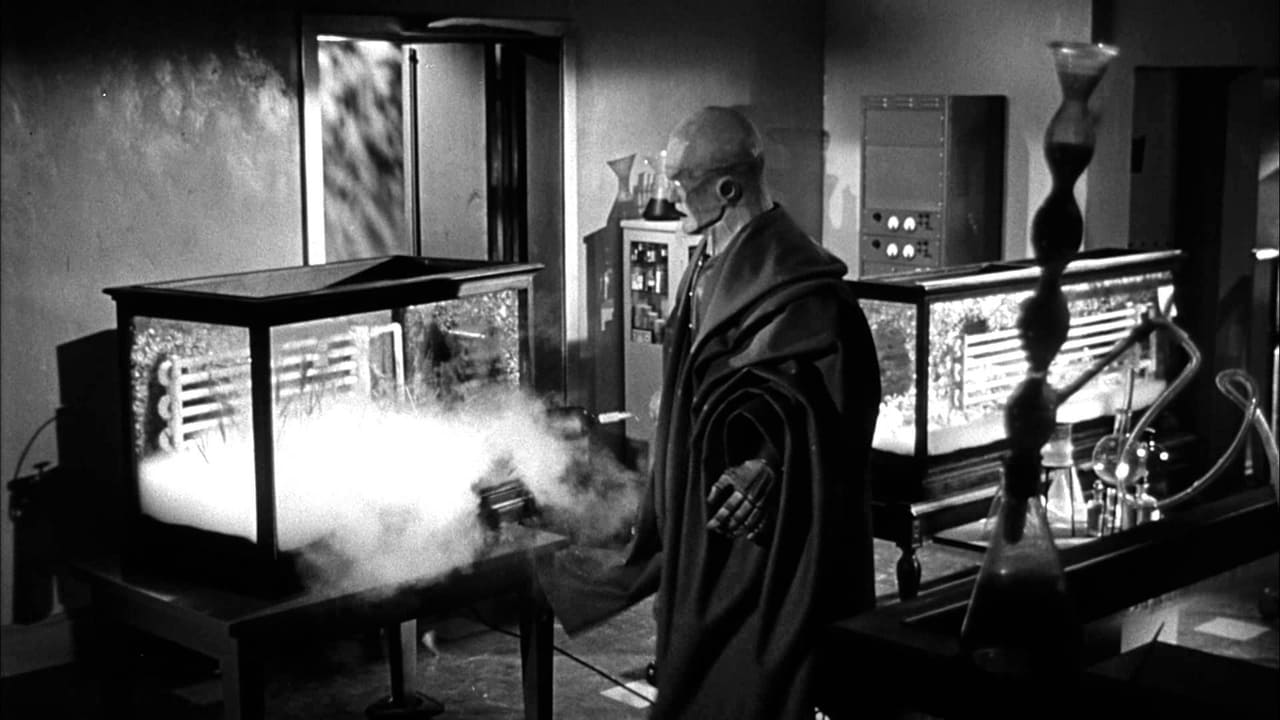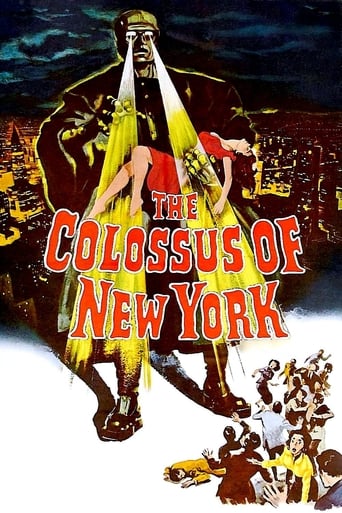

i was born in 1957 and have loved horror movies since i was a kid. Somehow, this movie never crossed my path in my childhood years. I never heard of or saw this movie until 1980. We had just gotten cable TV and this movie was shown in a horror movie marathon, including Earth vs. The Flying Saucers and The Day the Earth Stood Still. I thought this movie was above average but never considered it "great," however, over the years, it's kind of grown on me. I've always liked Ross Martin, who is the star of this movie. There are many movies i would consider better but for some reason, i still like watching this movie. I ended up buying the blu-ray version.
... View MoreThis movie has some very intriguing implications. Of course, we have to take the medical advances and the technology as possible. Ross Martin is one of the world's greatest hopes for finding a way to feed the exploding population. On his way to accept what is probably the Nobel Prize (they change the name) he chases a little toy airplane, blown out of his son's hands by the wind, and is run over by a truck. His father, one of the foremost brain experts, working in tandem with his brother, manages to remove his brain and hook it up to machinery and ultimately to a robot that gives it mobility. He is a zealot and harsh, self-centered character, who feels that he gets to make the rules. He has never respected the other son and treats him like a small child. This man is himself an engineering genius who has contributed greatly to his late brother's success with little credit. What the "mad scientist" (which isn't really an accurate term) forgets is that the brain now lies in the head of an unfeeling machine. This leads to depression and thoughts of revenge. There is still a connection to the wife and the little boy, and when the brother begins to try to make his way into the family (with little success), jealousy gets the best of him and he commits fratricide. Instead of seeing himself as the salvation of the world, he begins to see humans as inferiors who need to be eliminated. He develops two abilities. One is the ability to connect with people (to locate them through ESP) and the second is a death ray which allows him to kill innocent people. He becomes overwhelmed with anger at the drop of a hat. His connection to the little boy is a serious factor.
... View MoreAlthough the title of this movie - "The Colossus of New York" - suggests that the Big Apple is terrorized for most of the running time, the title figure only goes on a (brief) rampage in the final few minutes. For just about the rest of the movie, the Colossus stays on a country estate near the city. Though it might have been more fun to show the Colossus on more of a rampage, the movie is still enjoyable. Certainly, there are some unintended chuckles, like the primitive science used to construct the Colossus. But there are actually some genuinely good moments here and there. The scene where the Colossus is first activated is both creepy and intriguing. And there are some pointed questions as to if the scientists are doing the right thing or not. Though the movie is cheap, there is some real atmosphere in part with the piano musical score, which gives this movie a really different feeling than other sci-fi movies of this period. Don't get me wrong - this isn't some intelligent masterpiece. But it manages to catch your attention, and at 70 minutes does not overstay its welcome.
... View MoreReviewers appear to be about evenly divided on this film. Half are enraptured by "The Colossus of New York", and half think it's laughably bad. I tend to be in the middle somewhere. I think the movie is a slightly above average 1950s sci-fi/horror flick with a very good cast and some interesting twists. However, I've never thought the film represented some sort of special viewing experience.Ross Martin plays a scholar/humanitarian/all around good guy who is killed off in an unfortunate accident early in the film. His father (Otto Kruger, in an extremely pompous performance) implants Martin's brain in a huge Frankenstein-ish robot (played by Ed Wolff).Naturally, the robot doesn't just sit around smoking cigarettes and watching TV--he predictably goes berserk, wreaking havoc on Martin's enemies and, in a somewhat mawkish plot twist, befriending an innocent little boy. After smashing all kinds of things, the robot commits suicide with the help of his little schoolboy friend, dying at the UN building in New York.The pluses are a good cast, fine piano score, and very good photography on a limited budget. The minuses are the predictable storyline and the awkward relationship between the homicidal robot and a little boy. Worth a look, but not a classic in my opinion.
... View More